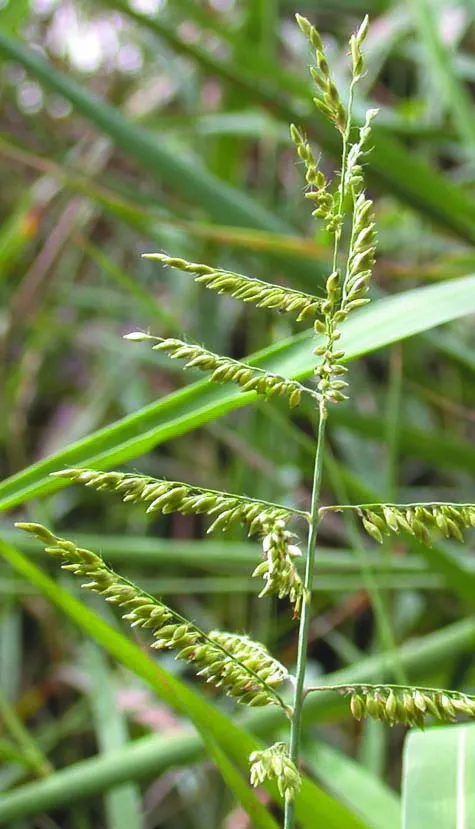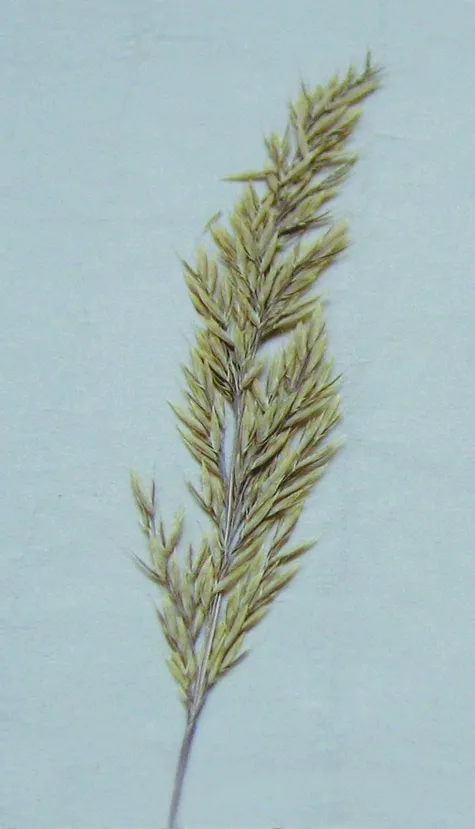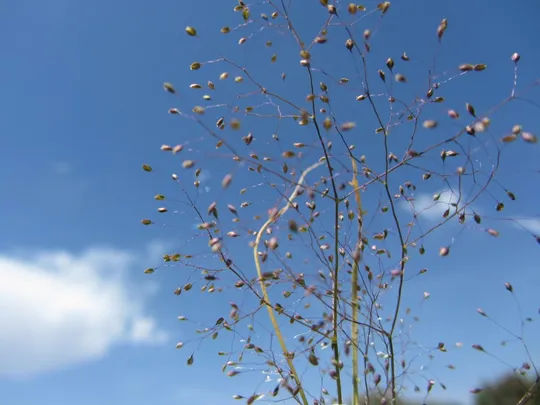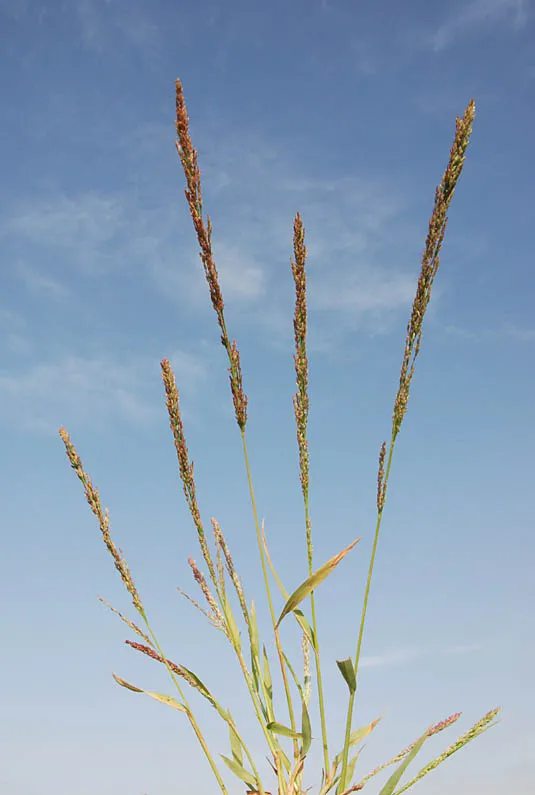Brachiaria eruciformis
According to the
Flora Palaestina and Danin (2004) Brachiaria eruciformis is
a rare plant that grows in the following regions: Judean Mountains, Samaria and
the Kinarot Valley. Rotem records note the species in En Misrafot in the Upper Galilee (1993),
in an orchard in the Judean Mountains (1987), and in En el - Aziz near Kanaf in the
Golan (2004, dominates the water stream) as well. In
each of the regions,
the species is known from a single site, and it is very difficult to return and find it again. The
species has not been recorded from the coastal plain. It was observed with certainty in only 4 sites throughout Israel.
Moist places near springs and water canals, as well as in orchards and irrigated fields. According
to Danin (2004), it is more prevalent in the warm Kinarot Valley, which may be related to its tropical origin, although in Israel it also grows in cool places in the mountains. In other Mediterranean countries it also grows in moist depressions on clay soil in agricultural fields.
The genus Brachiaria includes some 50 species that are found in the hot areas of the globe in both the Old and New World. The genus is close to the genera Panicum, Echinochloa and Paspalum, all of which belong to
the Panicoideae tribe in the family Gramineae
(Poaceae). All the tribe members have typical spikelets with only two florets, the
upper floret is androgynous and fertile and the lower flower is atrophied or male. In all these genera, the spike
breaks off after ripening and all the spikelets (or group of spikelets) fall off as one unit. The spikelets are dorsally
compressed. The distinction between the genera in the tribe is very difficult; Brachiaria
species have branched, sparse panicles. The spikelets in the other
genera mentioned are arranged densely along the lateral inflorescence axes in a double row. This two-row structure is prominent in Paspalum
species and in B. eruciformis and is less evident in Brachiaria mutica and in the Echinochloa species.
·
Its definition as a
rare species likely reflects the fact that in the
entire region in
which Brachiaria eruciformis grows, no rare species survey has been
conducted, and therefore very
little is known about its
distribution, the number of sites, the size of its
population and its stability. Mapping its sites may possibly remove this species from the
Red list!
·
None
of the sites is located
in nature reserves.
·
Some
of the sites are located
in natural wetlands and some in irrigated fields. The preferred
growth habitat needs to be clarified.
A stable population of Brachiaria eruciformis should be located and the distribution of the species in Israel should be
mapped. If it turns out that the species episodic, it should be removed from the red list. If a stable population is found (in the Kinarot Valley?) a reserve should
be established there and the population should
be monitored.
Brachiaria eruciformis has a very broad distribution: southern Europe and the eastern Mediterranean, and
eastward to India. Its range spreads
southwards to eastern equatorial Africa (Ethiopia,
Eritrea) and down to South Africa. In the Middle East, it grows
in Turkey, Cyprus, Egypt (common), Arabia, Yemen, Syria, Lebanon,
northern Iraq, northern and central Iran. It is a naturalized species in North America.
Brachiaria eruciformis
is an annual plant with
a very broad global distribution, which
grows near wetlands. It is extremely rare in Israel and is found only
on four sites located in four regions. The species may be episodic. At a national level, its inclusion in the red plant list may be
justified due to its rarity and the destruction of these
habitats. However, it's broad global distribution and its characteristic
invasiveness cast doubt regarding its definition as a red plant. In this book, we have taken the approach that
every country
should emphasize its own local parameters in determining the "red list" and place less importance on global considerations. At this stage, we assume that for Israel B. eruciformis
is probably a stable plant and one of the wetland species of tropical origin (an
important biogeographic group that has been seriously threatened over the past
sixty years). Additional field surveys are
required to establish our knowledge of
the species and to consider how to preserve it.
Current Occupancy Map
| 1000 squre meter pixel | 5000 squre meter pixel | 10000 squre meter pixel | |
|---|---|---|---|
| number of observations | 0 | 0 | 0 |
| in total pixels | 0 | 0 | 0 |
| Family | Gramineae |
| Classification | On the endangered species list |
| Ecosystem | Mediterranean humid |
| Chorotype | Multi-Regional, Tropical, Mediterranean and Irano-Turanian |
| Conservation Site | En el-Aziz, Kanaf in the Golan |
| Rarity |
1
4
6
|
|---|---|
| Vulnerability |
0
2
4
|
| Attractiveness |
0
0
4
|
| Endemism |
0
0
4
|
| Red number |
1
3.2
10
|
| Peripherality | 0 |
| IUCN category | DD EW EX LC CR EN VU NT |
| Threat Definition according to the red book | Vulnerable |
 Based on:
Based on:






